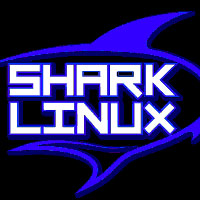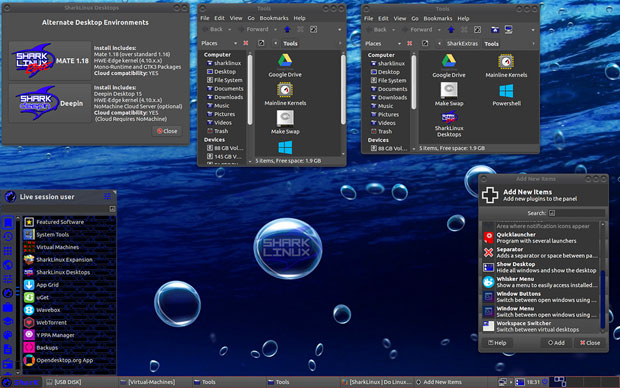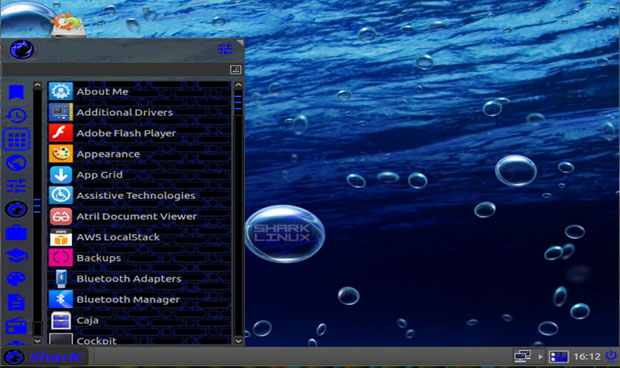
![]()
SharkLinux OS is one of those very rare newcomer distributions that has “Future Big Winner” written all over it.
Over my many years of reviewing Linux software and distros for Linux Picks and Pans, I have found that the story of what spurred the developer to create the distro often showcases the driving power that enables open source software.
That is the case with SharkLinux OS, which has an interesting back story — a tale of innovation and ingenuity. SharkLinux OS delivers a good performance early in its development cycle, and that makes the developer’s experience an eye-opener for what distro makers endure for the love of their craft.
A bit of confusion sparked my interest in fishing around for the history of SharkLinux. I initially stumbled on a Shark Linux distro established in 2004 while researching new releases on DistroWatch. Its definition was intriguing, partly due to that distro’s Gentoo Linux roots. However, DistroWatch showed it as discontinued.
Sure enough, the website was unloadable. Upon more searching, I found links to brief discussions of another distro dubbed “SharkLinux OS” that led me to its active website. There I found the developer’s comments about taking a one-month halt to issuing his normal weekly build releases.
That triggered the question: Were the two Shark distros related? Nowhere on DistroWatch or the SharkLinux OS website could I find definitive details or contact information. Even the developer’s name seemed to be a big secret.
Ultimately, I tracked down the of a person identified as the project’s maintainer — Marcus Petit. More searching uncovered an email address.
About SharkLinux OS
SharkLinux OS is an Ubuntu-based distribution featuring the MATE desktop, but a switching feature lets you run either the upgraded MATE Edge desktop or the Deepin DDE environment.
Several factors make SharkLinux OS easily distinguishable from other typical Linux OS strategies. For example, it maintains sort of a rolling release development cycle that automatically upgrades packages on the system and pushes system changes.
The distribution also enables SUDO access by default, which provides the convenience of maintaining and modifying system settings without requiring a password. Even better, the developer reduced common package management commands to a set of easy-to-remember shortcuts.
Under the Hood
Petit’s goal is to provide a stable environment with easy administration targeting 64-bit AMD Opteron and Athlon 64 processors. He also wants to tweak SharkLinux into a hardware optimized operating system with its own unique set of management tools, along with new functionality of the ANSI console for administrator use.
To get there, Petit included the Ubuntu Hardware Enablement kernel by default. This combination gives SharkLinux the potential to outperform other Linux systems.
Petit developed SharkLinux OS in a virtual environment. He made it a virtual-focused OS and desktop environment that is fully cloud compatible.

In addition, he designed SharkLinux around swap file space instead of dedicated partitions. Another cool feature is the distro’s preference of one-click software installs from cloud-hosted repositories, or built software from source over pre-installed apps.
Revelations and Clarity
Back to how SharkLInux came about… Petit did not pick up where the discontinued Shark Linux distro left off. He is not that dead distro’s developer.
Petit is SharkLinux OS’ sole developer. He has no team helping him nor community supporting his efforts.
Still, he has made remarkable progress on his own. Perhaps his biggest dilemma was trying to “qualify” SharkLinux OS to be listed on DistroWatch. Petit readily admitted that his near infant distro is so young that he failed to anticipate it becoming “public” so soon.
“Having an interest in cloud computing/virtual machines, I had developed a bit of a hobby writing scripts for building customized desktops that I could access from my smartphone on the go,” he told LinuxInsider.
Not all software plays nicely in a cloud, though. Over time, he learned various hacks and successful workarounds, and ran into not-so-workable software.
Early in his coding experiments, he toyed with the idea of releasing a build. That idea took shape after a friend was shocked to learn that the desktop accessed on his phone actually was a cloud instance that outperformed his own bare-metal setup running the same Xubuntu base.
Seed Takes Root
Petit decided to take the plunge into going public after exploring another distro with similarities to his own setup. He was sure his own concoction worked better. When he confided to his friend that he actually was going to pursue his suggestion, the friend asked what he would call his new distro.
“Jokingly, I told him SharkOS — pronounced not as written but rhyming with my name, “Marcus,” he said. “The name SharkLinux kind of evolved from that.”
It was later that his Google search on names revealed the defunct “other Shark Linux” abandoned a decade earlier. He decided it was too late in his own process to change names.
“In short, there is zero connection between them besides a similar name,” Petit said.
Major Hurdle
One of the first things Petit did when starting development likely was his biggest misstep so far. DistroWatch criteria mandates that to be listed he needed a website and an ISO to install.
Petit also learned that DistroWatch imposed a one-year waiting list to allow projects the chance to mature. He figured by the following year his build would be ready for public use, so in a couple of hours, he wrote a description of what he envisioned as the final product and launched it on Github.
He also put together a basic desktop and collection of applications and built them into an ISO. Then he posted it on Sourceforge and emailed DistroWatch to make them aware of the new project.
Snowball Effect
Petit soon realized the consequences of his inexperience and naivete. He thought he had started his time line for development and would be ready for release and eligible for listing with DistroWatch in January 2018. What he had not counted on was how fast word could spread.
“Within a week, there were Youtube videos reviewing that ISO that I had whipped up between periods of a hockey game,” he said.
He worked to get the system shaped into a usable state. After the first flurry of interest, to his relief, the attention subsided.
“I abandoned some plans that weren’t workable and narrowed the focus to the category of my skill set: virtual environments and cloud. I focused on building the system and integrating my virtual environment tools into the OS,” Petit explained.
Best-Laid Plans
Then the unthinkable again sent him into a frenzy. DistroWatch decided six months early to move SharkLinux OS from the waiting list to the new release category. Petit still had not written a word of documentation.
He also was plagued by an accumulation of misinformation in Youtube videos, and faulty information on websites distributing his distro. The lack of his own documentation still adds to the furor.
For example, little features built into the system remain undocumented. So even the people who have been using SharkLinux OS the longest do not know they exist, lamented Petit.
First Look
SharkLinux is an impressive and very classy OS. Once the first-use software installations take place and you configure the desktop features to your liking, most everything just works.
My desktop environment of choice is Cinnamon, but SharkLinux’s default MATE 1.16 as it is integrated here is a strong contender.
Click in the main menu on the SharkLinux button to open options for Featured Software, Tools and Virtual Environments. The Tools submenu is where you find the SharkLinux Desktop alternatives for Mate 1.18 EDGE and Deepin.

The Tools submenu provides a variety of cloud options and virtual environments. The collection of background in its ever-changing slideshow is a nice touch.
Using It
SharkLinux OS pulls much of its showcase software from Github. The developer does not pre-compile software installations. Instead, Petit builds from source via one-click installers, which gives you the most current build.
Software often is installed on first run in an effort to keep the base system light, and so that users have only what they want and use, according to Petit.
Many upstream packages are available to upgrade from the defaults. They are unlocked by installers and are optional.
For example, LibreOffice is not pre-installed as a full office suite. The base system ships with Writer and Calc by default, with an option to install the remaining suite applications via dedicated cloud repository. That process was fast and easy.
MATE 1.16 is the default desktop. Doing an APT update plus upgrade command will not change that, but the distro has an option to upgrade to 1.18.
The installer temporarily enables the repository hosting the packages. It upgrades MATE and then removes the repository to prevent other software from being upgraded unintentionally, explained Petit.
Bottom Line
SharkLinux OS is a cool display of innovation and design. The developer boasts that he never used a physical keyboard in making his distro. Petit developed it exclusively in a cloud environment accessed from his Samsung Galaxy Android smartphone.
Even if you do not have a big commitment to cloud services, SharkLinux OS offers an excellent computing platform for everyday tasks. It is an easy rival to other Linux distros.
Instead of versioning its releases, SharkLinux offers a base system that you can upgrade or convert. The base includes primarily standard Ubuntu releases with all upstream software being offered by way of optional installs and upgrades.
The OS uses three private software mirrors to download software simultaneously to allow faster installs. Plus, the OS automatically upgrades itself.
Shark Linux is a work in progress, so you will see changes, sometimes often, as the developer pushes new stuff to the system.
I like SharkLinux. Despite its youth, it has more savvy and stability than many more-developed distros I have tested. SharkLinux OS is definately a keeper!
Want to Suggest a Review?
Is there a Linux software application or distro you’d like to suggest for review? Something you love or would like to get to know?
Please email your ideas to me, and I’ll consider them for a future Linux Picks and Pans column.
And use the Reader Comments feature below to provide your input!






















































